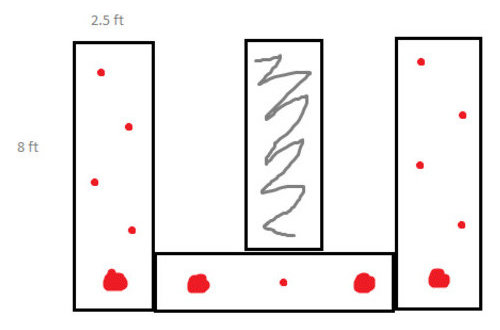How do I trellis offset planted tomatoes?!
cvitale
11 years ago
Related Stories

EDIBLE GARDENSSummer Crops: How to Grow Tomatoes
Plant tomato seedlings in spring for one of the best tastes of summer, fresh from your backyard
Full Story
EDIBLE GARDENSGarden BFFs? Why Your Vegetables Are Begging for Companion Plants
Foster friendships among plants for protection from pests, pollination support and color camaraderie
Full Story
GARDENING GUIDESGrow Your Own Privacy: How to Screen With Plants and Trees
Use living walls to lower your home and garden's exposure while boosting natural beauty in your landscape
Full Story
HOUZZ TVHouzz TV: How to Make and Plant a Veggie Box
See how to start edibles from seed, then transfer the seedlings to a box on stilts to make harvesting more fun
Full Story
GARDENING GUIDESCalifornia Gardener's June Checklist
Update your hydrangeas, catch up on tomatoes and more ways to enjoy your California garden in June
Full Story
FARM YOUR YARDHouzz Call: Home Farmers, Show Us Your Edible Gardens
We want to see where your tomatoes, summer squashes and beautiful berries are growing this summer
Full Story
SOUTHWEST GARDENING10 Flowering Vines for Southwestern Gardens
These resilient, adaptable plants thrive in the region’s extreme climate and provide a variety of garden benefits
Full Story
EDIBLE GARDENS8 Surefire Vegetables and Herbs for Beginning Gardeners
Learn the edible plants that are popular and easy to grow in a backyard or container garden
Full Story
CALIFORNIA GARDENINGCalifornia Gardener's May Checklist
Only one major chore but a plethora of planting possibilities means a delightful month in California gardens
Full Story
GARDENING GUIDESSouthwest Gardener's June Checklist
Protect your plants from too much sun while waiting for rain relief, and guess what? Those cacti might need a drink
Full StorySponsored
More Discussions







gumby_ct
zeuspaul
Related Professionals
Williamsburg Landscape Contractors · Arden-Arcade Landscape Contractors · Cincinnati Landscape Contractors · Davidson Landscape Contractors · North Highlands Landscape Contractors · Wilsonville Landscape Contractors · Chicago Ridge Landscape Contractors · Maplewood Landscape Contractors · Clarksville General Contractors · Fort Pierce General Contractors · Merritt Island General Contractors · North New Hyde Park General Contractors · Renton General Contractors · Del City Decks, Patios & Outdoor Enclosures · Monroeville Decks, Patios & Outdoor EnclosuresKathy F
zeuspaul
missingtheobvious
zeuspaul
missingtheobvious
gumby_ct
gumby_ct
missingtheobvious
zeuspaul
missingtheobvious
gumby_ct
tn_gardening